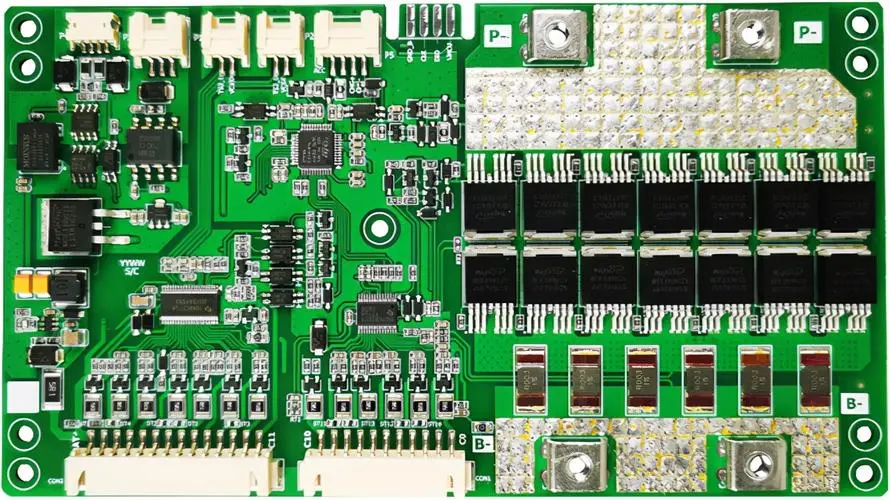If you are using a LiFePO4 battery pack for your solar system, electric vehicle, or backup power, you might be wondering how to ensure BMS safety for your battery pack. BMS stands for Battery Management System, which is a device that monitors and controls the voltage, current, temperature, and balance of your battery pack. BMS safety is crucial for preventing damage, fire, and explosion of your battery pack due to overcharging, over-discharging, short circuit, or thermal runaway. In this article, we will explain what BMS safety is, why it is important, and how to achieve it for your LiFePO4 battery pack.
What is BMS Safety?
BMS safety is the ability of the BMS to protect your battery pack from operating outside its safe operating area. The safe operating area is the range of voltage, current, and temperature that your battery pack can handle without causing damage or danger. The BMS safety can be achieved by using various features and functions of the BMS, such as:
• Voltage protection: The BMS can cut off the charging or discharging current when the voltage of any cell group in your battery pack reaches its maximum or minimum limit. This can prevent overcharging or over-discharging of your battery pack, which can cause degradation, swelling, or leakage of your cells.
• Current protection: The BMS can limit the charging or discharging current of your battery pack according to its capacity and state of charge. This can prevent overcurrent or short circuit of your battery pack, which can cause overheating, melting, or burning of your cells.
• Temperature protection: The BMS can measure the temperature of your battery pack using sensors and adjust the charging or discharging current accordingly. This can prevent thermal runaway of your battery pack, which can cause fire or explosion of your cells.
• Balance protection: The BMS can balance the voltage of each cell group in your battery pack using resistors or capacitors. This can prevent voltage imbalance of your battery pack, which can cause uneven performance, capacity loss, or premature aging of your cells.
Why is BMS Safety Important?
BMS safety is important for several reasons, such as:
• Performance: BMS safety can improve the performance of your battery pack by ensuring that your cells are working at their optimal condition. This can increase the power output, energy density, and cycle life of your battery pack.
• Reliability: BMS safety can improve the reliability of your battery pack by preventing any faults or failures of your cells. This can reduce the risk of downtime, maintenance, or replacement of your battery pack.
• Safety: BMS safety can improve the safety of your battery pack by avoiding any hazards or accidents of your cells. This can protect your battery pack, your equipment, and yourself from any harm or injury.
How to Achieve BMS Safety for Your LiFePO4 Battery Pack?
To achieve BMS safety for your LiFePO4 battery pack, you need to follow these steps:
• Choose the right BMS: You need to choose a BMS that is compatible with your LiFePO4 battery pack in terms of voltage, current, and features. You need to make sure that the BMS can handle the nominal voltage and the maximum current of your battery pack, and that it has the necessary features and functions for BMS safety, such as voltage protection, current protection, temperature protection, and balance protection. You can find different models and specifications of BMSs from online platforms like AliExpress or Amazon.
• Connect the BMS correctly: You need to connect the BMS to your LiFePO4 battery pack according to the wiring diagram that comes with the BMS. You need to connect the main positive and negative wires of the BMS to the positive and negative terminals of your battery pack. You also need to connect the balance wires of the BMS to each cell group in your battery pack. You need to make sure that the wires are connected in the correct order and polarity, and that they are secured and insulated properly.
• Test the BMS functionality: You need to test the BMS functionality before using your LiFePO4 battery pack. You need to check the voltage, current, and temperature of your battery pack using a multimeter or a voltage monitor. You also need to check the balance status of your battery pack using a balance charger or a balance board. You need to make sure that the BMS is working properly and that it can protect your battery pack from overcharging, overcharging, short circuits, or thermal runaway.
Conclusion
BMS safety is essential for your LiFePO4 battery pack, as it can improve the performance, reliability, and safety of your battery pack. By choosing the right BMS, connecting it correctly, and testing it functionality, you can ensure BMS safety for your LiFePO4 battery pack. We hope that this article has helped you understand what BMS safety is, why it is important, and how to achieve it for your LiFePO4 battery pack. If you have any questions or comments, please feel free to leave them below.
